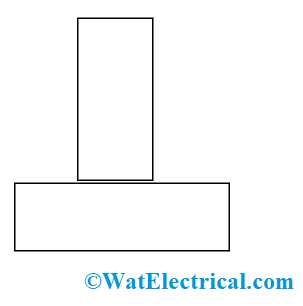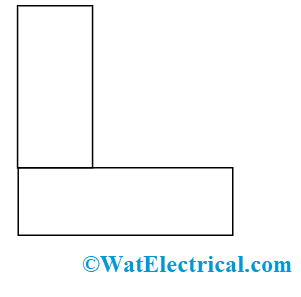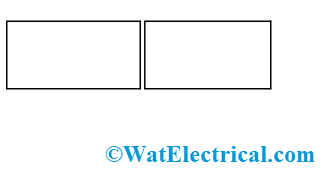These days, metal fabrication is the most popular metal soldering technique, implemented in many industries, but these fabrication techniques are not achieved without welding. So, welding has been around with us from the ancient period itself. The ancient period of welding involves the hammering of two metal pieces under heat until they are connected. The initial and modern welding method was invented by Sir Humphry Davy where an electric arc is generated between the electrodes through the battery. Later on, there was a quick and great advancement in the welding approaches and today many of the domains are implementing welding approaches. So, let be clear with the concept of welding joint and what are the types in welding joints?
What are Welding Joints?
Definition: Welding is the process where two or more metal parts are joined through heat or pressure or in few cases, both heat and pressure are used to join the parts. Welding is mostly performed on thermoplastics and metals but can be implemented on wooden materials also. The metal or thermoplastic materials that are joined are termed as parent materials and the component which helps to form a joint is termed as consumable or filler. Parent material compositions are almost analogous to that of parent material and so these compositions form a homogeneous weld. Whereas when the parent material and consumables are with different compositions, they are termed as heterogeneous.
Process of Welding
Mostly there are two kinds of welding and they are of arc and torch welding. Arc welding makes use of an electric arc to melt down the materials along with the filler. This process consists of connecting a grounding wire to any metal surface. The other wire called an electrode lead that has to be welded is placed on this material. Once this is pulled, there will be a generation of an electric arc. This then melts down the metal parts together with the filler which can connect the metal pieces.
Whereas torch welding corresponds to another welding approach. This method usually works with an oxyacetylene torch to dissipate the metal pieces and the electric rod. The welder operates the torch and rod at the same time, along with weld management. Even this is a minimally acceptable method by industries, it is even implemented for many repair and maintenance operations.
Different Types of Welding Joints
Every industry has its own requirements and every industry needs various kinds of welding joints. In the scope of this, welding joints are developed to meet the necessities of every application. Professionals have discovered many methods of welding joints and a few of those to be discussed are as follows:
Tee Welding Joint
T-joint is formed when the two pieces have 900 intersection angle and this position allow the metal pieces to be at the center position. This kind of joint is termed as fillet type and this is even made of tube or pipe welded into any surface plate. Here additional maintenance is necessary to make sure of efficient dispersion into the surface weld.

tee-joint
There are multiple ways of creating T-joints such as fillet, slot, plug, J-groove, melt-through, and bevel-groove.
Edge Welding Joint
This kind of joints is implemented for sheet metal parts that have flanging corners or when the metal parts are positioned at the location where the weld is connected to the nearby pieces. In the groove kind of weld, the metal or thermoplastic parts are places adjacent and they are welded on the same corner. For denser welding joints, the melt is added with fillers to strengthen the plate.

edge-joint
There are multiple ways of creating edge joint such as bevel-groove, edge-flange, U-groove, J-groove, corner-flange, butt weld, and V-groove.
Corner Joint
This is the most widely implemented welds in the sheet metal engineering and this is positioned on the external side of the material. This joint attaches two metal parts where they come in L position. This kind of welding joints is popular in the applications of box constructions, box framings and the same type of fabrications.

corner-joint
There are multiple ways of creating edge joints such as J-groove, corner-flange, bevel-groove, V-groove, flare V-groove, spot, and fillet.
Lap Joint
Lap welding joints are applied most probably to connect two metal pieces that have different thicknesses compositions. It is also termed as fillet type, where the welding joint is made on either on one or both sides of the plates. This welding joint is formed when the two metal pieces are placed in a lapping position each one lying on the top of the other.

lap-joint
There are multiple ways of creating edge joints such as a plug, slot, spot weld, bevel-groove, J-groove, and flare-bevel-groove.
Butt Joint
This is the most widely implemented technique for connecting a pipe to itself where it is even utilized for faucets, flanges, fittings, and other apparatus. This joint is even called as square grove weld. This is also the most popular and simple kind of welding joint. Here two flat plates are placed parallelly and then they are connected.

butt-joint
There welding approaches used here are bevel-groove, U-groove, V-groove, flare V-groove, flare bevel-groove and square-groove.
Benefits of Welding Over Riveting
The benefits are;
- Welding and riveting are the two approaches to joining metals. Both methods have benefits and disadvantages and the selection of methods is based on the industry requirement. Few of the points to be considered in these approaches are:
- Welding joints can be done at any location of the metal where edges of two metal can be welded without overlapping. While in riveting, there has to be a specific amount of clearance space to connect edges.
- The construction procedure is simple and is lightweight where no additional hardware is necessary, In riveting, rivets itself are heavy materials and the construction process is somewhat complicated.
- Quality welding gives a smooth out and flat surface, but riveting leaves rivets ends on the entire surface. Through welding, one can expect a strong and beautifully curved surface that creates nice architecture.
- Welding joints are completely effective where the welding joints are strongly attached.
- Embellishments or modifications can be simply done in the welding method. While in riveting, rivets are minimally adaptable and extra engineering is needed to implement any kind of changes.
FAQs
1). What is the strongest welding type?
Mostly T or corner joints are stronger where they have deeper penetration.
2). What are the foremost welding techniques?
The foremost welding techniques are TIG, stick, flux-cored and MIG.
3). What does a V-joint mean?
V-joint has utilized in construction to position a joint which is in general between pieces, or repetitive products, like that of sliding, flooring, and many others.
4). What is the fundamental principle of a weld?
The electrode material is either molten attached to the base material or it persists in its solid phase. Arc welding makes use of transferring electricity to heat energy.
5). What is the strongest welding material?
Aluminum is the strongest welding material because it is in its alloy or ore form.
Please refer to the link and know more about Welding Types.
So, choosing of correct welding joint is based on the thickness and procedure employed. Mostly, square welding joints are economical for the metal parts which have a thickness of 3/8”. And the double grooving joints are cost-effective which need minimal welding time and equipment. The other concepts to be known in welding joints are why welding joints are mostly preferred, and what kinds of materials are used?